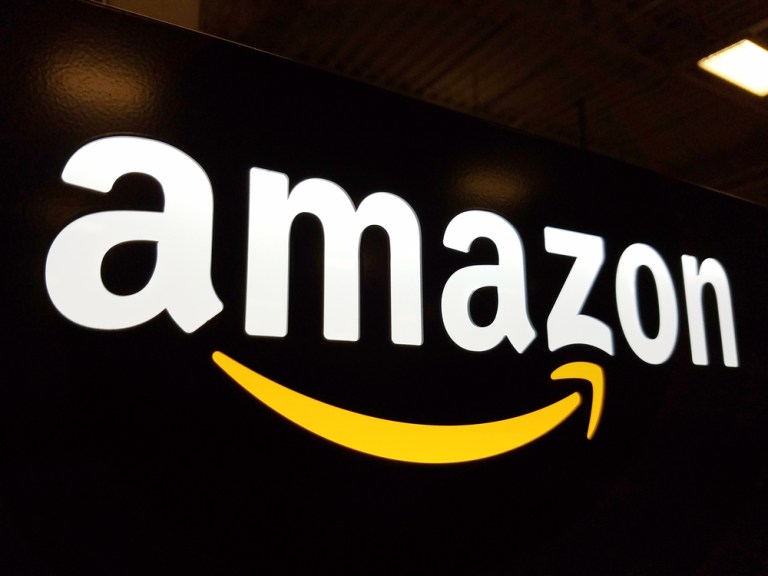Amazon Gets Q4 Prime Member Surge, Hints At Business Model Change

After missing revenue expectations for the last two quarters, Amazon managed to beat the Street this time around, announcing recording-breaking holiday sales figures for the final quarter of 2018.
Revenue clocked in at $72.4 billion, well above the $71.9 billion estimated pre-earnings. Amazon reported $3 billion in profit with earnings per share of $6.04 versus the $5.68 estimated by analysts.
Amazon Web Services continued to see strong results, maintaining its 45 percent growth rate from last year and reporting $7.43 billion in revenue, ahead of the $7.3 billion predicted. “Amazon’s Other” segment which is mostly comprised of its advertising business, increased 95 percent year-on-year to $3.4 billion in revenue.
Analysts, in their debriefing call with Amazon CFO Brian Olsavsky, probed Amazon’s advertising revenue, since it marks something of a decline in revenue from Q3 when Amazon reported 123 percent growth in its “Other” category. Analysts wondered if the business is slowing down, if Amazon has considered expanding its advertising services beyond its core business into areas like video streaming and what its plans to do to attract advertiser going forward.
Olsavsky mostly rebuffed those question, noting only that Amazon is “continually excited about the opportunity there,” and committed to leveraging its wide data troves to build more and better targeted tools for advertisers across a wider range of venues. Specifics past that were not forthcoming.
Amazon had similarly enthusiastic, if vague, takes on Alexa and Echo.
“Alexa was very busy during her holiday season. Echo Dot was the best-selling item across all products on Amazon globally, and customers purchased millions more devices from the Echo family compared to last year,” CEO Jeff Bezos said in a statement.
Prime Membership also got a shoutout, with Olsavsky noting they were extremely pleased with the engagement from Prime members and that this holiday quarter saw “the highest ever number of Prime member signs-up compared to any other quarter we’ve ever had.” That is significant and a change from previous years, where Q4 is normally the weakest annually for new Prime sign-ups.
Forthcoming changes to its eCommerce regulations were a recurring concern among analysts, who asked repeatedly if the new rules made India a less attractive eCommerce frontier.
Olsavsky reported that while the regulations are still being evaluated, Amazon believes the long term picture on India still looks good — though “new regulations need to be interpreted and we need to see if there are unintended consequences for Indian buyers and sellers.”
A slowdown in physical retail figures — which come mostly from Whole Foods with a mix-in of Amazon’s other physical retail endeavors like its bookstores and Amazon Go locations — declined 3 percent year over year, which caught some attention. Olsavsky told analysts that a change to Whole Foods’ fiscal calendar to match Amazon’s added five extra days to the prior year’s fourth quarter. He also noted that online Prime orders that are picked up at or delivered from Whole Foods do not count as physical store sales.
When adjusting for those factors, Olsavsky said, sales were actually up by 6 percent.
Olsavsky also noted on the call that Amazon might consider changing the fee structure it charges sellers as the breakdown of its sales continues to change. During the holiday quarter, Amazon reports that over 50 percent of sales on the platform came from small- and medium-size businesses.
“More than half of our units sold are from third-party sellers, so it’s very important to us that we have the right business profile both for Amazon and for the sellers” he said. “Part of that involves changing fee structures, sometimes adding new fees or subtracting old ones, part of it involves raising or lowering fees that sellers pay. So you’re going to see this continually from us,” he said, without offering further specifics.
But the big concern point for investors, after the results were out, seemed to be a weaker-than-expected forecast for Q1. Amazon is estimating between $56 billion and $60 billion in sales — below the $60.8 billion forecast pre-release. This combines with concerns that Amazon retail sales are slowing down. Though revenue was up 19.7 percent in Q4, it was actually Amazon’s slowest quarter for revenue growth since 2015.
And that slowdown was seen in both domestic and international growth — North American sales grew 18 percent year on year, in 2017 they grew 42 percent; International sales growth grew by 15 percent compared to the previous year’s 29 percent growth rate.
Amazon finished the year with $232.9 billion in annual revenue, passing the $200 billion milestone for the first time, and saw its stock price grow by 18 percent total.
And though it initially looked like that stock price was going to grow a bit more with the earnings reports, with stocks going up 1 percent at release, it seemed investors were more unhappy than happy. By the end of the earnings call, Amazon’s share price was down 4.5 percent in after-hours trading.